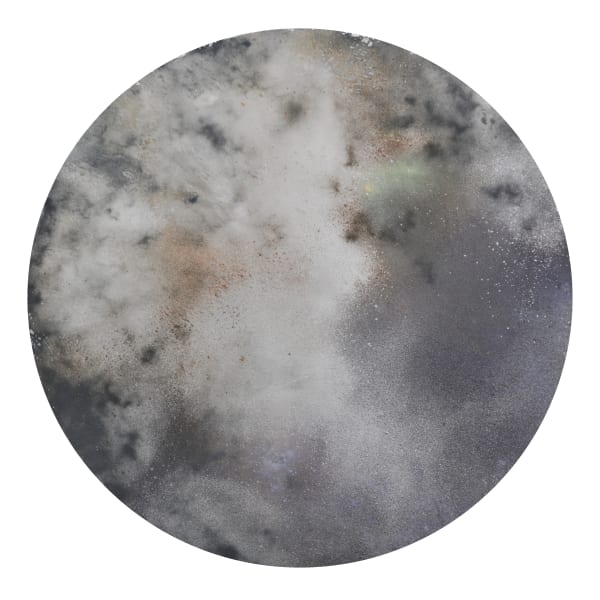SPACE(LESS): Collective exhibition, Paris
The voïd, French Designer and Architect Charlotte Perriand used to say, contains everything, because it represents the ability to move, the potentiality of motion.
Let's imagine an infinite space, without any point of reference. In such a space, movement would be impossible, because there would be nothing to measure the travelled distance. Thus for this proposition to be true, the voïd must at least contain, a milestone/marker.
Situated in its midst, this exhibition "Space(less)" borrows this frame of reference, questioning the existence and acknowledgment of space and how it's understood and perceived in society. What is space and how do we know define or demarcate it? Interpreted differently by our artists, the works of Felicie d’Estienne d’Orves and Pandora Mond take on the mysteries of cosmic space and light. In contrast, the work of Lara Porzak plunges the viewer into a timeless universe where only preserved memories services as a marker of existence. At the same time, the immersive exhibitions of Jayde Cardinalli and Noémie Lacroix provides a sensory perspective, alongside Hugh Findletar, whose works offer a poetic response to the contradictory yet complementary duality of what it means for a cup, a vessel, a demarcated space to be half full.
Photo credits: Quentin Chevrier
◊ 7, rue Saint-Claude, Paris
Le vide, disait Charlotte Perriand, contient tout, car il représente la possibilité de bouger, le mouvement en puissance. Mais imaginons un espace infini, dépourvu de tout repère. Dans un tel espace, il serait impossible de se déplacer, car rien ne permettrait de mesurer la distance parcourue. Il faut donc au minimum que le vide contienne un référentiel pour que cette proposition soit vraie. L’exposition « Space(less) » se propose d’imaginer la nature de ce référentiel : de quoi le vide doit-il être empli pour permettre le mouvement ?
Si les oeuvres de Félicie d’Estienne d’Orves et de Pandora Mond abordent le problème sous l’angle du temps cosmique, en s’intéressant à la lumière émanant des corps célestes ainsi qu’à la représentation d’exoplanètes, le travail argentique de Lara Porzak, au contraire, plonge le spectateur dans un univers atemporel, où seul le souvenir pourrait peut-être tenir lieu de point cardinal. Dans leurs installations immersives, Jayde Cardinalli et Noémie Lacroix quant à elles, transforment la question en une véritable expérience sensorielle. Enfin, les créations de Hugh Findletar, en jouant avec les notions de contenant et de contenu, offrent à l’esprit une réponse poétique qui transcende la dualité vide/plein.
-
 Jayde CardinalliWeight of the WorldGiclée Fine Art Print, Printed by Paragon Press35,6 x 27,9 cm
Jayde CardinalliWeight of the WorldGiclée Fine Art Print, Printed by Paragon Press35,6 x 27,9 cm
14 x 11 inLimited edition of 100 prints, each signed and numbered by the artist.$ 200.00©2019 Jayde Cardinalli. Copyright does not transfer with the sale of this print and the buyer is not entitled to reproduction rights. -

-

-

-

-

-

-

-

-

-

-

-

-

-

-

-

-

-

-

-

-

-

-

-

-

-

-

-

-

-

-

-

-

-










































